Ultimate Companion Planting Chart for 2024 Based on Evidence, Recent Research and Actual Experience
Companion planting is a gardening technique that involves growing different plants in close together to benefit each other in various ways.
It can enhance growth, deter pests, and improve soil health, creating a symbiotic relationship that leads to healthier and more productive gardens.


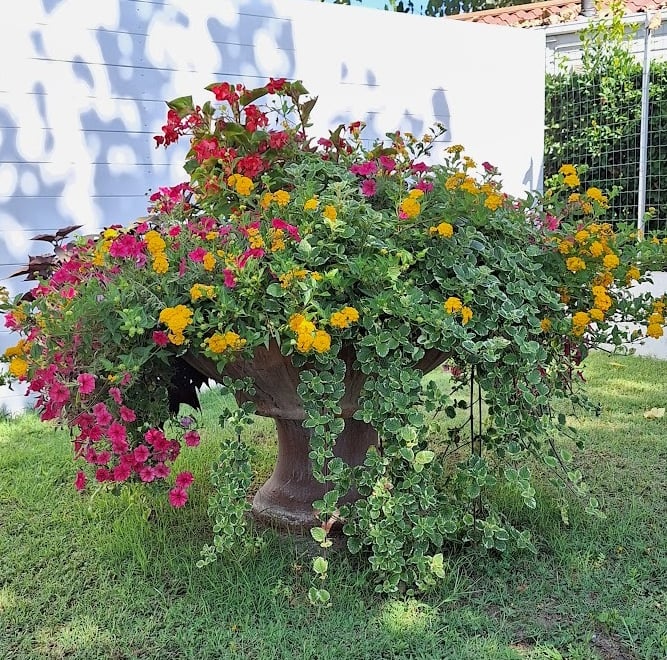





In this no-fluff and super actionable article we will explore the benefits of specific companion planting combinations, 3 different charts that show exactly which plants fit well together, and a bunch of important information you as a gardener need to know, backed by scientific studies and our practical observations.
Here are 6 most common companions:
Lettuce with peas
Carrots with rosemary
Broccoli with celery
Marigolds with peppers
Blueberries with strawberries
What Exactly is Companion Planting?
Companion planting involves strategically planting different plants, fruits, flowers and vegetables together so that the plants benefit from each other to create a beneficial relationship.
Certain plants can enhance the growth of others through various mechanisms such as pest control, improved nutrient uptake, and better pollination.
For example, research published in the Journal of Chemical Ecology has shown that certain plants release chemicals through their roots or foliage that can repel pests or attract beneficial insects. (1) These natural chemicals, known as allelochemicals, can significantly reduce pest populations without the need for synthetic pesticides. (2)
Benefits of Planting Vegetables, Fruits and Flowers Together
One of the primary benefits of companion planting is natural pest control. For instance, marigolds are known to secrete a substance called thiophene, which has been proven to deter nematodes and other soil-borne pests. A study from the American Society for Horticultural Science confirmed that marigolds planted among vegetable crops reduced nematode damage by up to 90%.
Similarly, basil has been shown to repel whiteflies, mosquitoes, and spider mites, enhancing the growth and health of nearby plants no matter whether container plants or other herbal plants.
Companion planting also improves soil health and nutrient uptake. Leguminous plants are well-known for their ability to fix atmospheric nitrogen into the soil, making it available for other plants. This symbiotic relationship with nitrogen-fixing bacteria benefits crops like corn and spinach, which have high nitrogen requirements.
Enhancing pollination and biodiversity is another key benefit. Planting flowers among vegetable crops attracts pollinators such as bees and butterflies. Research published in the Journal of Applied Ecology found that gardens with diverse plantings had significantly higher pollinator activity, which directly correlated with increased fruit set and yield. (1) Additionally, these flowers can attract predatory insects that help control pest populations.
Companion Planting Chart for Plants and Veggies to Plant in 2024
Here is the great companion planting chart that features the most common plants and vegetables, their companions, and why they work in all types of gardening conditions based on recent studies, our first-hand gardening experience, and other highly trusted resources:
Garlic and onions protect beets from borers and cutworms with their strong aroma. Brassicas and bush beans help manage pests and improve soil quality, while lettuce provides ground cover to retain moisture.
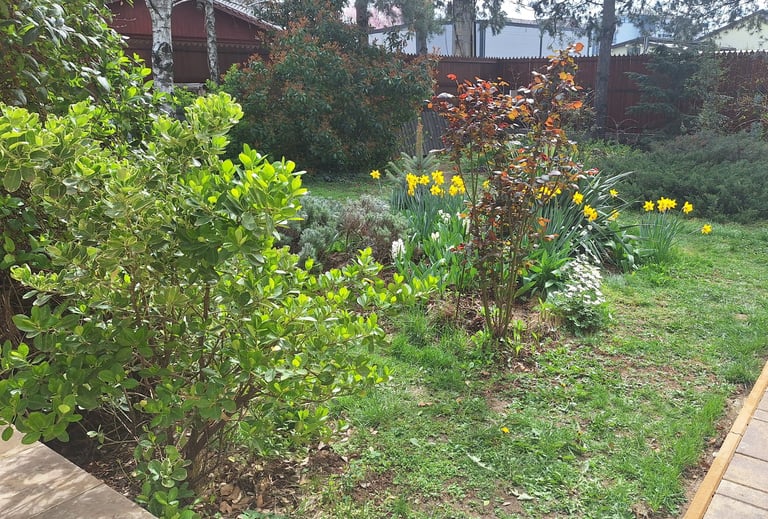



The Science Behind Companion Planting
Companion planting is rooted in ecological science, no matter whether you plant annuals or herbs together. Certain plants produce chemicals that can either attract beneficial insects or repel harmful pests. Intercropping systems can reduce pest incidence by up to 50%, primarily due to these biochemical interactions.
Moreover, after planting and growing hundreds of plants together we experienced that plants like vegetables engage in symbiotic relationships with nitrogen-fixing bacteria, enriching the soil for nearby plants, like already said before, remember?
5 Companion Gardening Tips From Our Specialists
1. Know Your Plant's Needs
Understanding the specific requirements of each plant, including soil type, water needs, and sunlight preferences is based on our experience always the best, this also applies to caring for your garden plants or perennials and growing your own herbs from seeds.
2. Plant A Wide Array of Plants
Create a biodiverse garden to reduce pest infestations and improve pollination, as seen in our garden. For example, you could consider planting plants that repel whiteflies.
3. Rotation and Planning
Ideally, rotate your crops yearly to prevent soil depletion and reduce disease risk.
4. Use Living Mulch (Ground Cover Plants) for Empty Spaces
Use ground-cover plants to retain moisture and suppress weeds naturally.
5. Observe and Adjust
Regularly monitor plant health and pest activity, and adjust your plant combinations as needed.



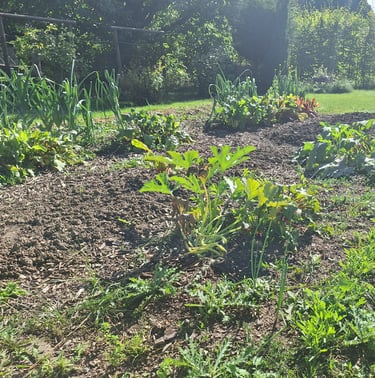

Garlic
Onions
Brassicas
Bush Beans
Lettuce
Beets
Plant
Best Companions
Why It Works





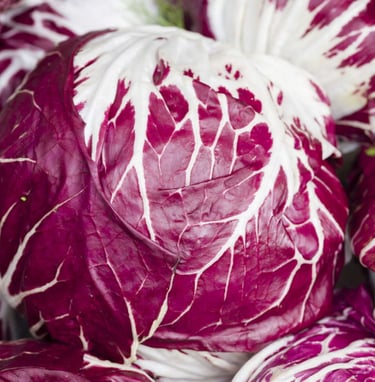
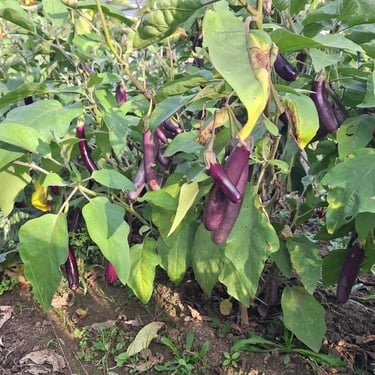

Eggplant
Lettuce
Peas
Radicchio
Marigolds
Beans
Peppers
Basil
Tomatoes
Marigolds deter nematodes and other soil pests, protecting eggplant roots. Peppers share similar growing conditions, and basil repels pests while attracting pollinators.
Beets add minerals to the soil, improving the growth of radicchio. Endive helps deter pests. Carrots help aerate the soil, lettuce provides ground cover to retain moisture, and onions deter pests with their strong aroma.
Alyssum attracts beneficial insects, and mint improves health and flavor. Carrots aerate the soil, chives deter aphids, and lettuce provides ground cover.
Chives
Radishes
Onions
Oregano
Peas
Beets
Endive
Carrots
Lettuce
Onions
Alyssum
Mint
Carrot
Chives
Lettuce
Celery
Nasturtiums
Dill
Hyssop
Beans
Strawberries
Peas
Beans
Cilantro
Eggplant
Peppers
Basil
Cucumbers
Nasturtiums
Marigolds
Garlic
Sage
Dill
Hyssop
Marigolds
Calendula
Petunias
Tomatoes
Basil
Marigolds
Marigolds
Radishes
Beans
Peas
Nasturtiums
Chives
Leeks
Rosemary
Sage
Peas
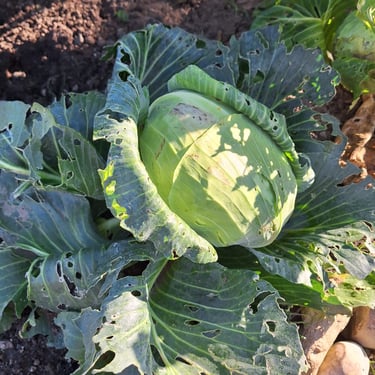

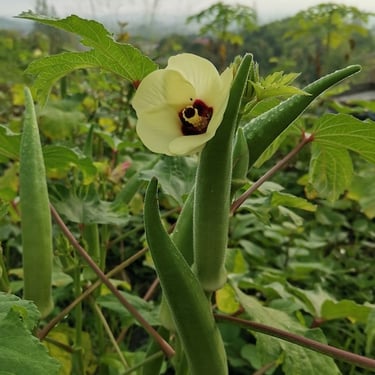


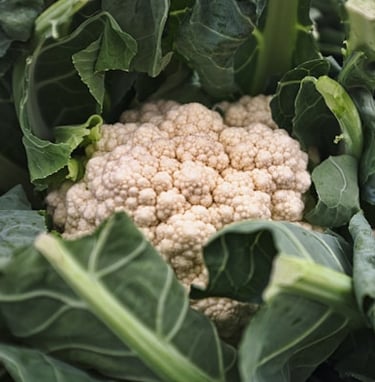
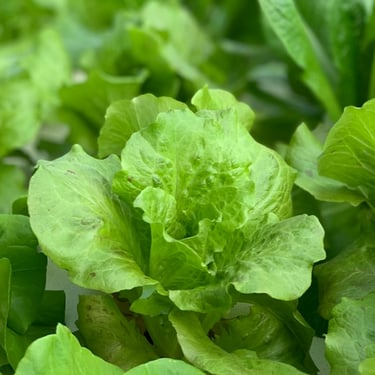


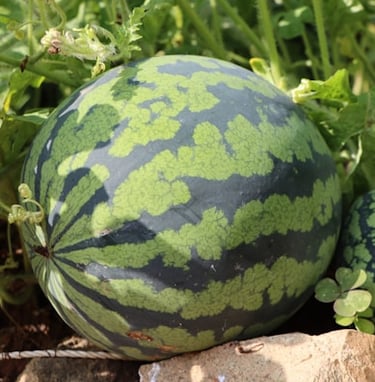



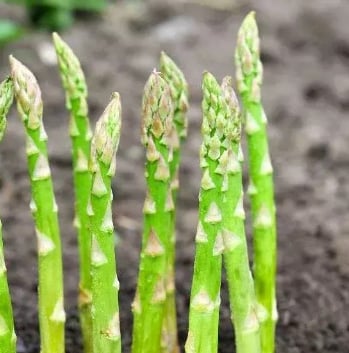


Peppers share similar growing conditions, and basil repels pests while attracting pollinators. Cucumbers provide shade, and nasturtiums and marigolds protect against pests, enhancing okra growth.
Calendula, petunias, and tomatoes deter asparagus beetles, while basil repels pests and attracts pollinators. Marigolds deter nematodes.
Celery improves soil structure, and nasturtiums deter pests. Dill attracts beneficial insects, hyssop repels cabbage moths, and beans fix nitrogen in the soil.
Chives deter aphids, and radishes act as a trap crop for flea beetles. Onions mask the scent to deter pests, oregano provides general pest protection, and peas enrich the soil with nitrogen.
Garlic repels pests with its odor, and sage deters cabbage moths. Dill attracts beneficial insects, hyssop enhances cabbage health, and marigolds deter nematodes and other pests.
Chives improve growth and deter pests, and leeks repel flying insects. Rosemary and sage deter carrot flies, and peas enrich the soil with nitrogen.
Marigolds deter nematodes, and radishes repel cucumber beetles. Beans fix nitrogen, peas improve soil structure, and nasturtiums deter bad insects.
We saw that strawberries provide ground cover, and peas and beans fix nitrogen. Cilantro repels pests, and eggplant provides shade.
Okra
Radishes
Carrots
Cabbage
Cauliflower
Broccoli
Asparagus
Spinach
Sweet Potatoes
Swiss Chard
Peppers
Watermelon
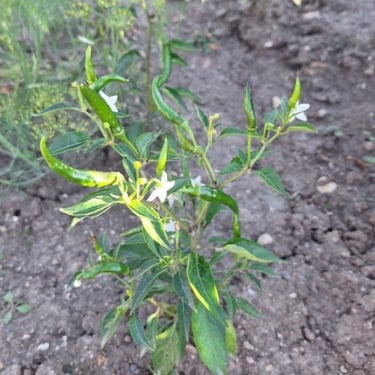

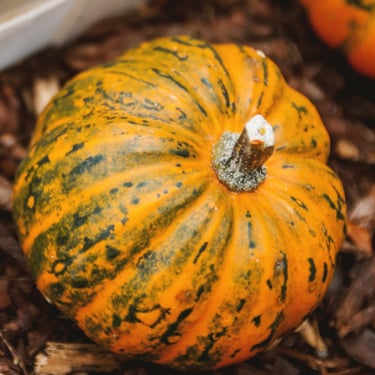


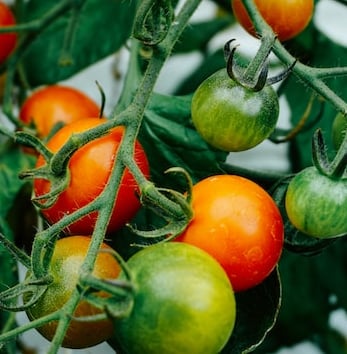



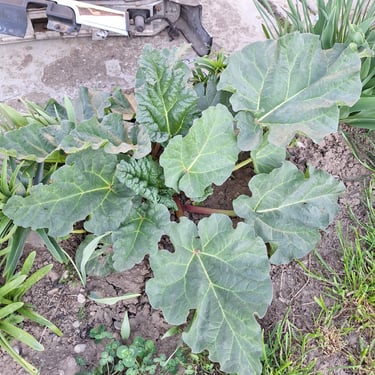
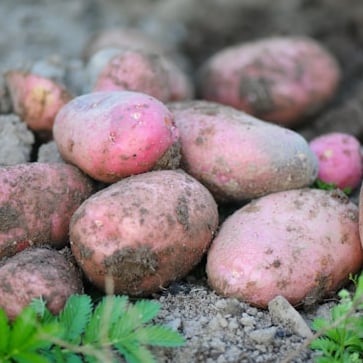


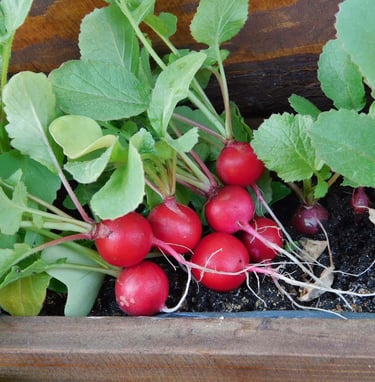
We experienced that basil repels whiteflies and attracts pollinators, and oregano and marjoram have protective qualities. Onions and garlic repel pests with their strong aroma.
Parsley improves the growth and flavor of tomatoes, attracts beneficial insects to roses, onions deter pests, beans and peas fix nitrogen, and garlic repels pests with its strong aroma, promoting parsley health.
Beans fix nitrogen, and alyssum attracts beneficial insects. Corn provides shade, marigolds deter nematodes, and radishes repel pests.
Nasturtiums deter squash beetles, oregano provides general pest protection, beans fix nitrogen, marigolds deter nematodes, and buckwheat attracts beneficial insects, enhancing winter squash growth and health.
Basil repels whiteflies and attracts bees, and borage repels hornworms. Calendula deters garden pests, dill supports parasitic wasps, and garlic repels pests with its strong aroma.
Oregano has insecticidal properties, and planting with other brassicas allows for easier pest management. Celery improves soil structure, nasturtiums deter pests, and beans fix nitrogen.
Carrots help aerate the soil, and lettuce provides ground cover. When we planted these together we experienced that Onions deter pests, and beans and peas fix nitrogen.
Chervil improves growth and flavor, and nasturtiums act as a trap crop. Peas fix nitrogen, lettuce provides ground cover, and carrots help aerate the soil.
Basil
Oregano
Marjoram
Onions
Garlic
Beans
Alyssum
Corn
Marigolds
Radishes
Chervil
Nasturtiums
Peas
Lettuce
Carrots
Nasturtiums
Oregano
Beans
Marigolds
Buckwheat
Carrots
Lettuce
Onions
Beans
Peas
Basil
Borage
Calendula
Dill
Garlic
Oregano
Other
Brassicas
Celery
Nasturtiums
Beans
Winter Squash
Tomatoes
Parsley
Beans (pole)
Sunflowers
Cucumbers
Dill
Peas
Nasturtiums
Radishes
Dill
Oregano
Sunflowers
Beans
Calendula
Horseradish
Cilantro
Tansy
Buckwheat
Nasturtiums
Oregano
Radishes
Tomatoes
Roses
Onions
Beans
Peas
Garlic


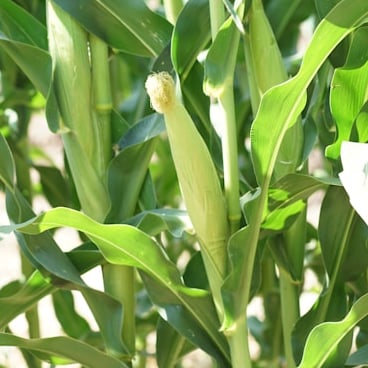


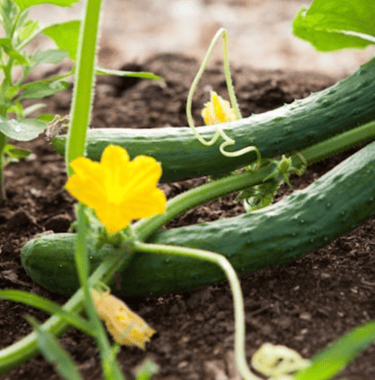
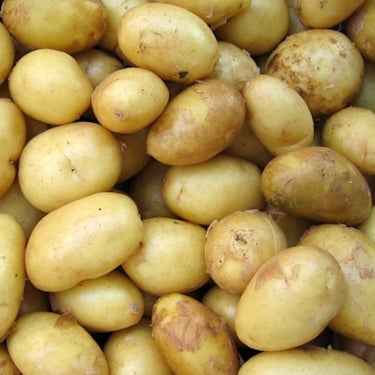

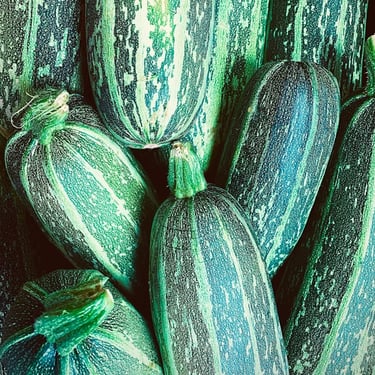

Corn
Potatoes
Zucchini
Cucumbers
Pole beans add nitrogen to the soil, sunflowers provide structure and wind protection, cucumbers provide ground cover, dill deters pests, and peas enrich the soil with nitrogen, which promotes healthier corn growth.
When we grew cucumbers multiple times we found that nasturtiums deter aphids, beetles, and bugs, radishes repel cucumber beetles, oregano and dill deter pests, and sunflowers attract beneficial insects.
Beans improve the size of potato tubers through enhanced nitrogen fixation. Calendula, horseradish, and cilantro deter Colorado potato beetles, and tansy deters various pests.
Buckwheat attracts pest predators, nasturtiums deter aphids and beetles, oregano provides general pest protection, marigolds deter nematodes, and radishes repel pests, enhancing zucchini growth and health.
Flower Companion Cart for Marigolds, Lavender, Roses and Many More
Companion planting with flowers is a unique and aesthetically pleasing way to enhance garden health and productivity while maintaining and growing your favorite flowers from seed or transplanting them into your garden.
Unlike vegetable companion planting, which primarily focuses on mutual benefits between food crops, flower companion planting focuses more on pest control, pollination, and overall garden biodiversity.
We experienced that incorporating flowers into your garden not only improves the ecosystem but also adds vibrant colors and scents that can make gardening a more enjoyable and visually appealing hobby.
In this chart are the 10 most common flowers and their companion plants:
Garlic and chives repel aphids while marigolds deter nematodes; together they enhance rose health by reducing pest stress.
Garlic
Chives
Marigolds
Sage
Lavender
Roses
Flower
Best Companions
Benefits and Notes

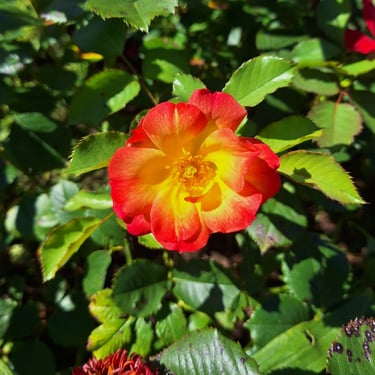

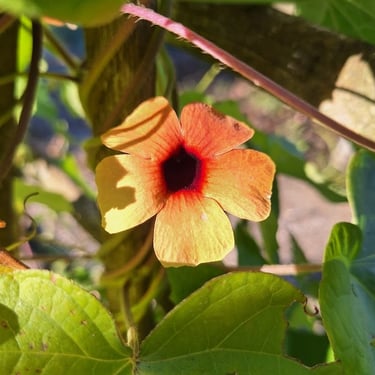
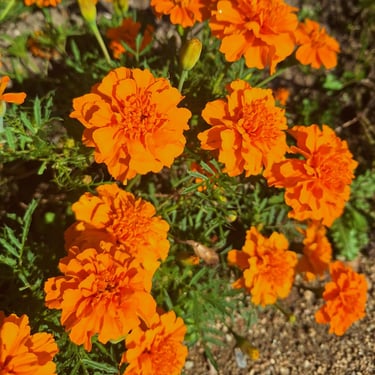

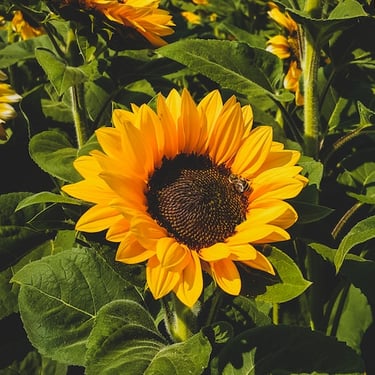

Sunflowers
Zinnias
Nasturtiums
Marigolds
Cucumbers
Corn
Peppers
Melons
Lettuce
We experienced that sunflowers provide shade and attract pollinators, benefiting cucumbers and melons; they also act as windbreaks for taller crops.
After testing these companions ourselves we saw that marigolds deter nematodes and attract beneficial insects, which enhances the growth and health of tomatoes, beans, and onions.
Nasturtiums attract aphids away from radishes and cucumbers; they also repel beetles and improve the overall pest control for squash.
Tomatoes
Peppers
Squash
Cucumbers
Basil
Tomatoes
Peppers
Beans
Onions
Potatoes
Radishes
Cucumbers
Squash
Cabbage
Beans
Broccoli
Roses
Cabbage
Cauliflower
Broccoli
Thyme
Sage
Lettuce
Brassicas
Strawberries
Carrots
Peppers
Cucumbers
Basil
Peppers
Tomatoes
Broccoli
Beans
Onions
Strawberries
Tomatoes
Squash
Cabbage
Peas
Beans
Tomatoes
Beans
Peppers
Onions
Cucumbers
Broccoli
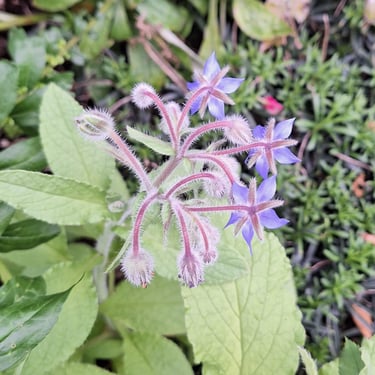

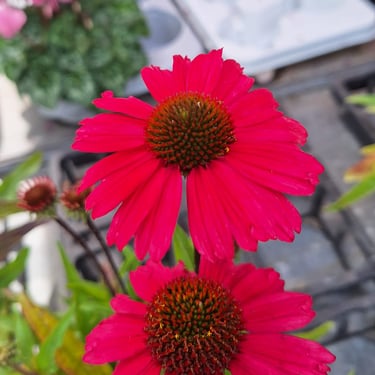

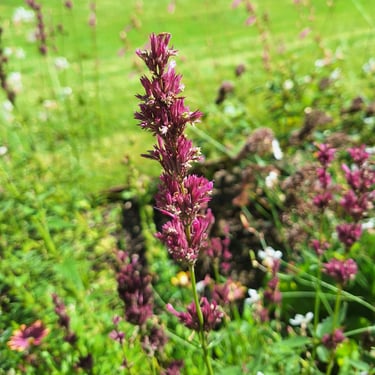

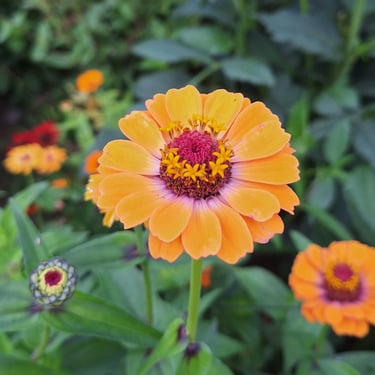




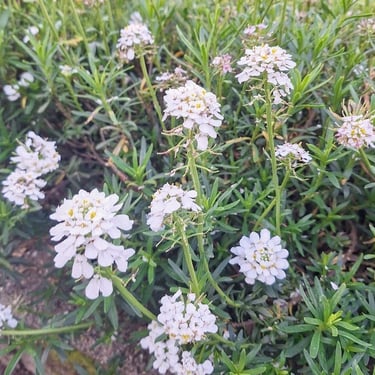
We saw that echinacea attracts pollinators and provides medicinal benefits. After growing it we experienced that it works well with basil and peppers to create a healthy, vibrant garden.
Lavender repels moths, flies, and fleas; when planted with roses and brassicas, it creates a fragrant, pest-resistant garden area in our experience.
Zinnias attract pollinators and beneficial insects, which improves the health and yield of tomatoes and peppers while enhancing garden biodiversity.
Borage attracts pollinators and deters pests. After growing it our expert Liviu found that it also improves soil quality, benefiting strawberries and tomatoes with its pest control and nutrient enhancement.
After our experiments, we found that calendula improves garden biodiversity, which enhances the growth and health of tomatoes, beans, and cucumbers.
Sweet alyssum attracts beneficial insects and improves soil moisture retention, aiding the growth of lettuce and brassicas while protecting strawberries.
Echinacea
Calendula
Borage
Lavender
Sweet Alyssum
Fruit Companion Planting Chart for The Most Common Fruits Like Cherries, Strawberries and Apples
Along the way, we saw that companion planting with fruits requires slightly different considerations compared to vegetables and flowers due to the perennial nature of many fruit plants and their specific needs for pollination and pest management.
This practice focuses on improving fruit yield, enhancing flavor, and protecting long-term plant health. Successful fruit companion planting can lead to healthier plants, larger harvests, and a more sustainable garden ecosystem.
Here is the fruit companion planting chart that features the 10 most common fruits and their companions:
After combining strawberries with multiple plants we found that borage deters pests and attracts pollinators. Thyme repels worms and enhances the growth of strawberries and spinach.
Borage
Thyme
Lettuce
Beans
Sage
Strawberries
Fruit
Best Companions
Why It Works
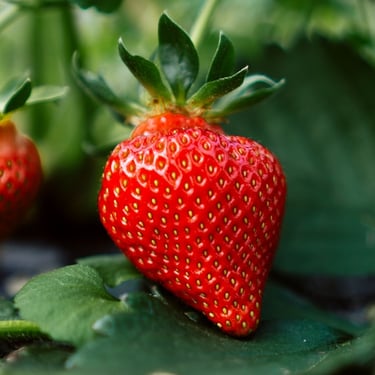

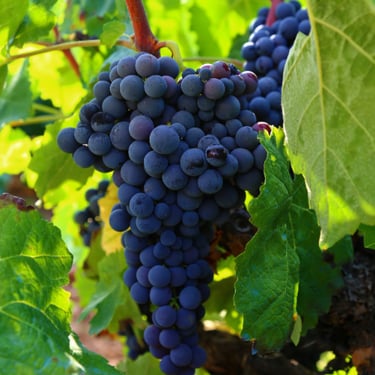


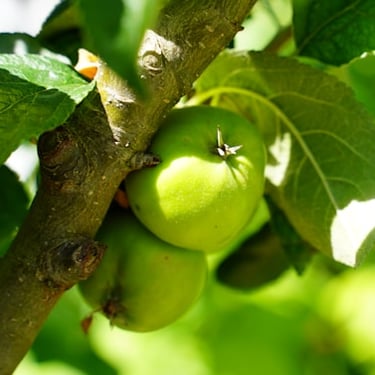
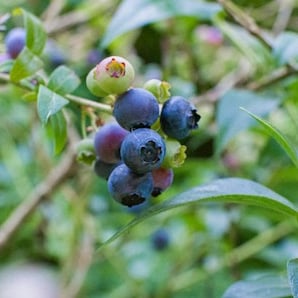

Blueberries
Raspberries
Grapes
Apples
Azaleas
Ferns
Hydrangeas
Strawberries
Rhododendron
Azaleas and rhododendrons share similar soil preferences. Borage attracts pollinators, which increases blueberry yields alongside strawberries and hydrangeas.
In our growing lab we saw that chives and garlic repel pests. Nasturtiums act as a trap crop, while clover improves soil nitrogen, which will benefit apple trees.
Hyssop and lavender repel pests; oregano and clover improve soil health and attract beneficial insects, enhancing grapevine growth.
Garlic
Marigolds
Chervil
Tansy
Nasturtiums
Chives
Daffodils
Garlic
Nasturtiums
Clover
Hyssop
Lavender
Oregano
Beans
Marigolds
Hyssop
Nasturtiums
Rue
Tansy
Chervil
Garlic
Strawberries
Peas
Beans
Cilantro
Eggplant
Marigolds
Chives
Garlic
Nasturtiums
Clover
Hyssop
Nasturtiums
Marigolds
Beans
Clover
Chives
Garlic
Marigolds
Garlic
Basil
Chives
Nasturtiums
Clover
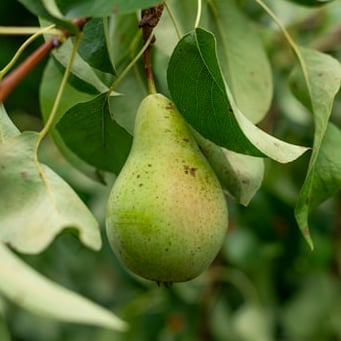

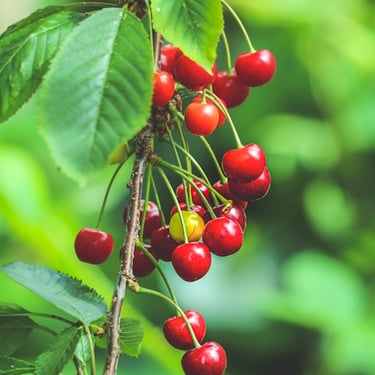





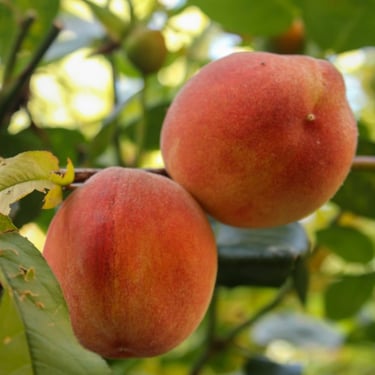

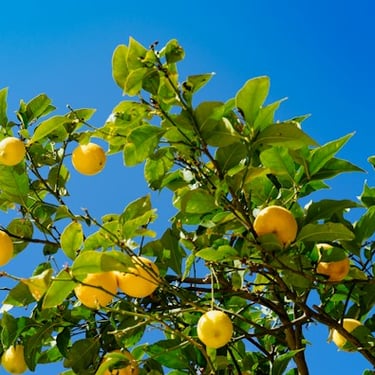

Marigolds and chives deter pests, garlic and nasturtiums improve cherry tree health and attract beneficial insects like ladybugs, and lacewings which serve as pest control agents.
Hyssop and rue repel pests; nasturtiums act as a trap crop, while tansy and garlic enhance blackberry plant health.
After growing raspberry multiple times we saw that garlic and marigolds deter pests. Chervil improves growth, while rue and tansy repel beetles, benefiting raspberry plants.
We saw that nasturtiums deter pests, marigolds attract beneficial insects, while beans and clover improve soil fertility for pear trees.
Marigolds and garlic repel nematodes and pests, basil and chives improve the growth and health of peach trees which makes them amazing companions.
We saw that strawberries provide ground cover, and peas and beans fix nitrogen. Cilantro repels pests, and eggplant provides shade.
Cherries
Peaches
Pears
Blackberries
Citrus
Attracting Beneficial Insects With the Right Companion Planting and Combating Pests
Many companion plants help attract beneficial insects like ladybugs, lacewings, parasitic wasps, etc. that act as natural predators for common garden pests. Some examples of the perfect companion plants for attracting beneficial insects are:
Planting herbs like dill, fennel, coriander/cilantro, and parsley can attract tiny parasitic wasps that kill aphids, caterpillars, and other pests.
Marigolds and nasturtiums are excellent for attracting predatory insects. Their strong scents and colors lure them in.
Umbelliferous flowers like dill, fennel, yarrow, angelica attract lacewings whose larvae feed on aphids, mites, thrips and more.
Planting a variety of flowering plants like zinnias, cosmos, sunflowers provides nectar for adult beneficial insects.
The chart below shows the number of plants that attract beneficial insects:
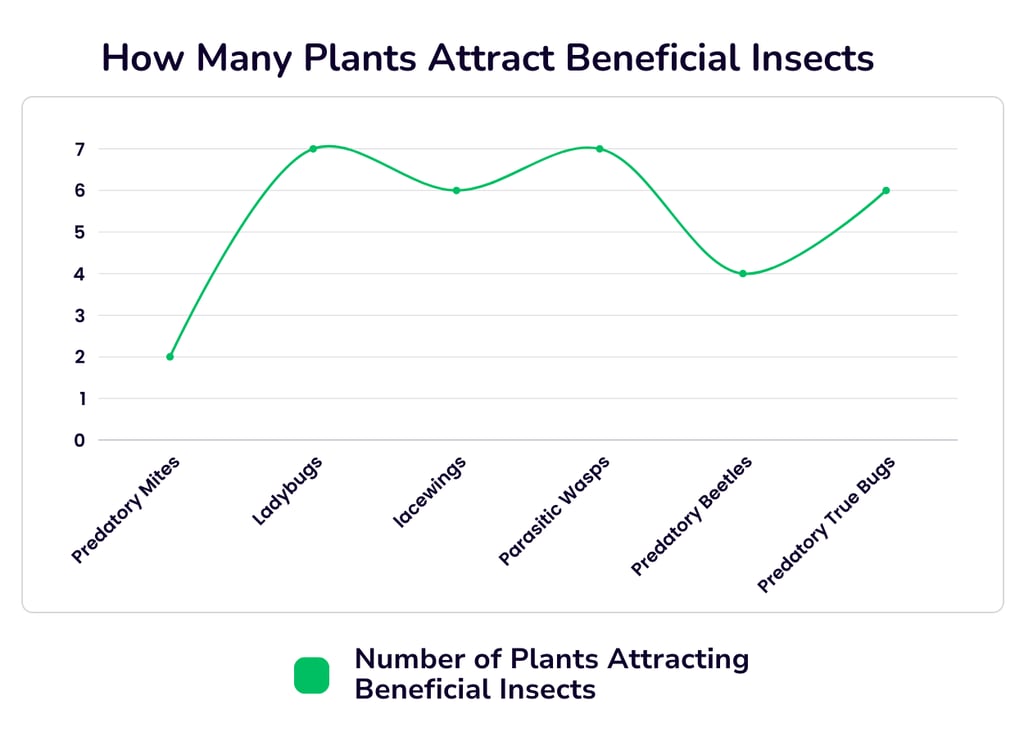

Spacing for Companion Planting
After planting hundreds of plants together and growing them we clearly saw that proper spacing between companion plants is crucial for allowing them to grow optimally without outcompeting each other for resources. The spacing depends on the specific plant combinations and their habits.
Here is a graph that shows different groups of plants (vegetables, fruits, flowers, herbs, ...) and their usual spacing requirements based on typical examples in that group:
Ideal Companion Planting Spacing in Different Plant Groups
Root Crops
Carrots: Space 18 inches between rows if planted with legumes
Beets: Space 24 inches between rows
Radishes: Space 18 inches from cucumbers/peas
Fruiting Crops
Tomatoes: Space plants 24-36 inches apart, leave 12-18 inch radius around each plant for underplanting
Peppers: Space 18-24 inches apart
Cucumbers: Space 6-12 inches from radishes/nasturtiums
Legumes
Beans: Space rows 24 inches apart if planted with corn
Peas: Space 18 inches from carrots/radishes
Herbs
Basil: Plant 12 inches from tomatoes/peppers
Dill: Space plants 18-24 inches apart
Marigolds: Plant every 1-2 feet along vegetable rows
Flowers
Nasturtiums: Space 6-12 inches from cucumbers
Zinnias/Cosmos/Sunflowers: Space 18-24 inches apart
Marigolds: Plant every 1-2 feet along vegetable rows
Fruits
Strawberries: Space rows 12-15 inches apart for underplanting spinach
Blueberries: Space 4-5 feet apart if underplanting oregano
The spacing allows for air circulation, prevents competition for nutrients/water, and enables easier harvest. Overcrowding can negate the companion planting benefits.
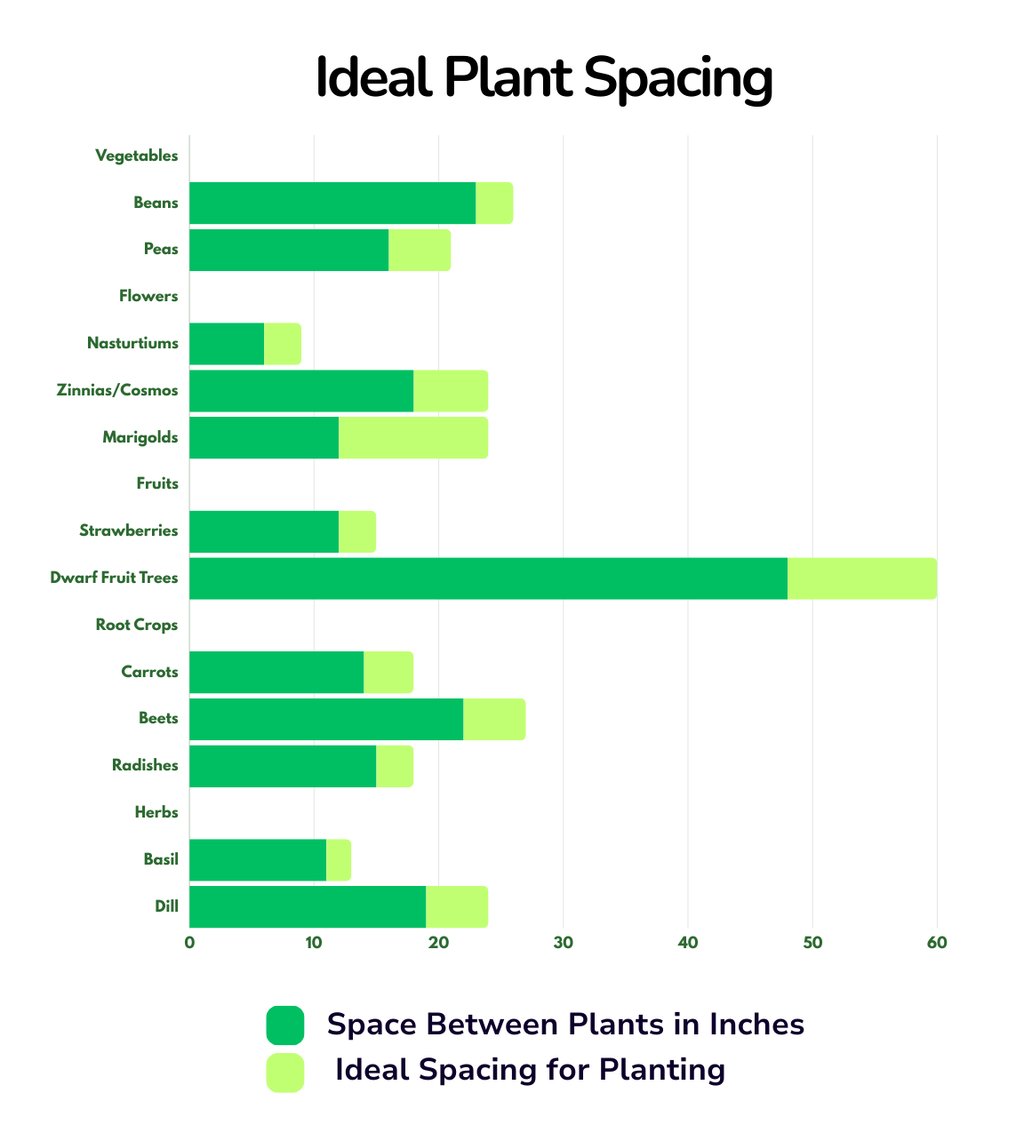


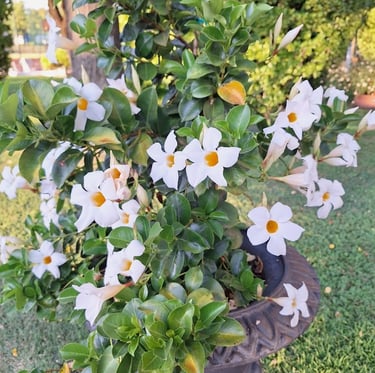
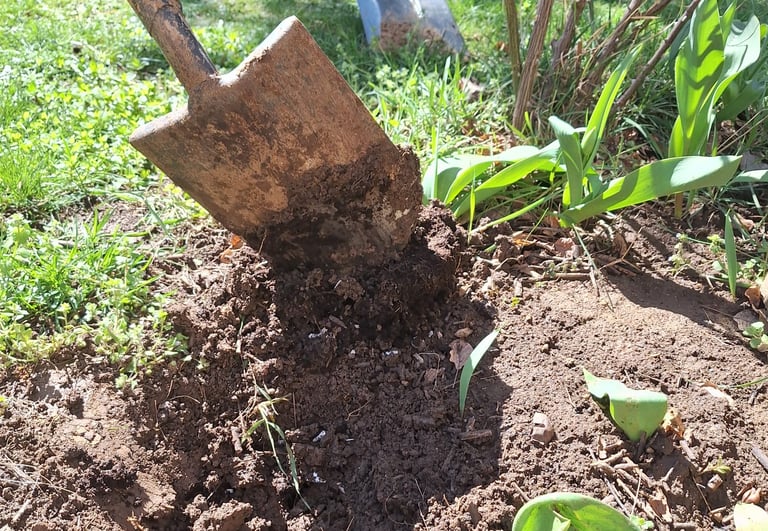




What Plants You Should Not Plant Together
Tomatoes and Brassicas: Inhibit each other's growth and attract pests.
Onions and Legumes: Onions inhibit the growth of legumes.
Carrots and Dill: Dill suppresses carrot growth.
Fennel and Most Garden Plants: Fennel releases chemicals that inhibit growth.
Potatoes and Tomatoes: Increased risk of disease and pest infestation.
Beans and Garlic: Garlic inhibits bean growth.
Cucumbers and Aromatic Herbs: Aromatic herbs stunt cucumber growth.
Corn and Tomatoes: Both are heavy feeders, competing for the same nutrients.
Asparagus and Garlic: Both inhibit each other's growth.
Radishes and Hyssop: Hyssop suppresses radish growth.
Strawberries and Brassicas: Brassicas suppress strawberry growth.
Lettuce and Broccoli: Although they fit amazingly together broccoli releases compounds that inhibit lettuce.
Sunflowers and Potatoes: Sunflowers inhibit potato growth.
Garlic and Beans: Garlic can stunt bean growth.
Cabbage and Grapes: Cabbage suppresses grape growth.


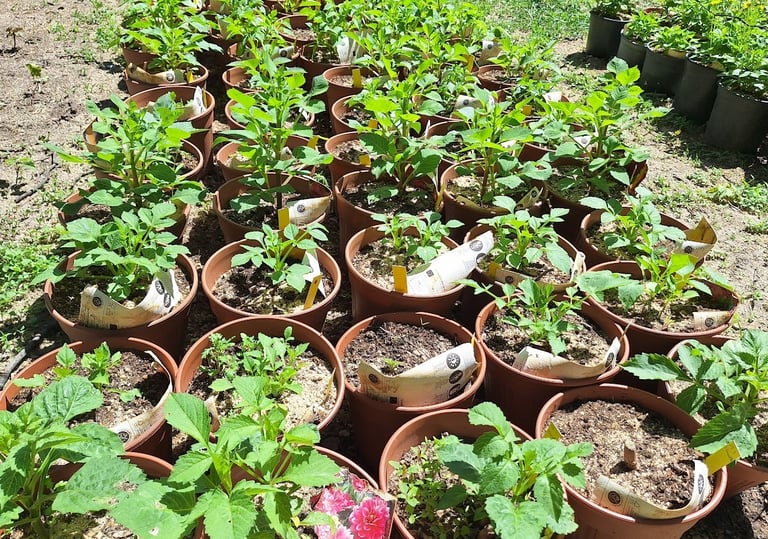

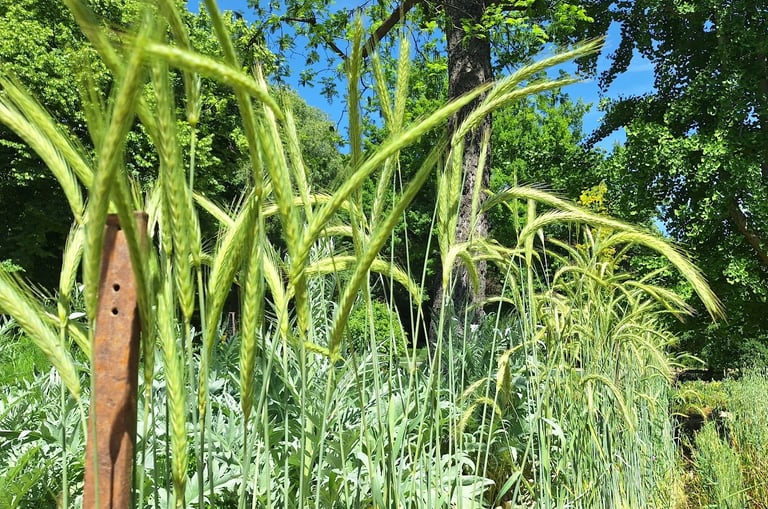




How to Know When Plants Fit Amazingly Together
Determining the best plant combinations for companion planting involves understanding the interactions between different plants and observing their mutual benefits. In our experience this is absolutely crucial for companion planting so that you can choose plants on your own. Here are some detailed steps and considerations to help you determine when plants are ideally suited to grow together:
1. Understanding Your Plant Needs
To successfully pair plants, start by understanding the basic requirements of each plant, including:
Sunlight
Ensure that plants with similar sunlight needs are placed together. For instance, sun-loving plants for example shrubs for sun should be grouped in areas with full sun, while shade-tolerant plants should be in less sunny spots.
Watering
Pair plants with similar water requirements to avoid over or under-watering. If you want to read exactly how you can water your plants like a pro check our full guide on watering garden plants.
Soil
Match plants with similar soil preferences in terms of soil pH, texture, and fertility.
2. Observing Plant Interactions
Observe how plants interact with each other in terms of physical space, root systems, and growth habits:
Physical Support
Some plants can provide natural support for others. For instance, corn can act as a trellis for climbing beans.
Root Systems
Plants with shallow roots can be paired with deep-rooted plants to maximize soil space and nutrients.
Canopy Coverage
Tall plants can provide shade for shorter, shade-tolerant plants. For example, sunflowers can offer shade to lettuce in hot climates.
3. Pest and Disease Management
Effective companion planting can help manage pests and diseases, ideally choosing at least one or two plants that repel pests in every area:
Natural Repellents
Some plants emit chemicals that repel pests. For example, garlic and onions release sulfur compounds that deter aphids and other pests.
Trap Crops
Certain plants can lure pests away from your main crops. Nasturtiums attract aphids, protecting nearby vegetables.
Beneficial Insects
Flowers like marigolds and borage attract beneficial insects, such as ladybugs and bees, that help control pest populations and improve pollination.
4. Nutrient Sharing and Soil Health
You should also consider how plants can complement each other nutritionally:
Nitrogen Fixers
Leguminous plants like beans and peas fix nitrogen in the soil, benefiting nitrogen-demanding plants like corn.
Nutrient Accumulators
Some plants, like comfrey, accumulate nutrients from deep in the soil and make them available to other plants through decomposing leaves.
5. Companion Planting Studies and Historical Data
Refer to scientific studies and historical data that provide evidence of successful plant pairings:
Scientific Research: Numerous studies have validated traditional companion planting practices. For example, research by the University of California Cooperative Extension has documented the benefits of planting basil near tomatoes for enhanced growth and pest control.
Historical Practices: Traditional agricultural knowledge, such as the Native American “Three Sisters” method of planting corn, beans, and squash together, demonstrates effective companion planting techniques that have been used for centuries.
Practical Tips for Assessing Plant Compatibility
Here are practical tips directly from our specialists to help you assess plant compatibility in your garden for better companion planting:
Trial and Observation
Start with small experiments and observe the results. Ideally, take notes on plant health, growth rates, and pest presence.
Gardening Journals
If you can keep a gardening journal to record the success and challenges of different plant combinations each season, this would also be another great method to help you understand your companion planting better.
Consult Reliable Sources
Use gardening books, extension services, and reputable online resources to learn about effective companion plantings.
Feedback from Local Gardeners
Connect with local gardening groups or forums to share experiences and gather insights specific to your region. You can also direct-message us on our social profiles and we will provide you with tips directly tailored to your situation.
FAQs
What makes a companion plant?
A companion plant is one that offers tangible benefits to its neighboring plants, such as pest deterrence, nutrient enrichment, or structural support.
These plants interact synergistically, creating a more resilient and productive garden ecosystem.
What vegetables should not be planted next to each other?
Certain vegetables should be strategically placed apart due to incompatible growth patterns, susceptibility to pests and diseases, or nutrient competition. For instance, avoid planting members of the nightshade family, like tomatoes and potatoes, together to minimize the risk of spreading diseases like blight.
What is the difference between companion and intercropping?
Companion planting focuses on pairing plants that provide mutual benefits, such as pest control or nutrient enhancement, whereas intercropping involves growing different crops together in the same space to optimize land use and increase yield.
While both methods harness plant interactions, companion planting emphasizes the specific advantages of each pairing.
What not to grow with peppers?
Peppers should not be cultivated near plants like fennel, asparagus, or beans, which may stunt their growth or attract pests and diseases detrimental to peppers. Maintaining adequate spacing and avoiding incompatible neighbors can help optimize pepper growth and yield.
What are companions in plants?
Companions in plants refer to species that harmonize when grown together, exhibiting mutually beneficial relationships that promote overall garden health. These plants may repel pests, attract pollinators, improve soil structure, or provide shade and support for neighboring crops, fostering a balanced and thriving garden ecosystem.
What is the purpose of a companion?
Companions serve to enhance the vitality and productivity of neighboring plants by offering various advantages, including pest management, soil fertility enhancement, and ecosystem diversification.
By strategically selecting companion plants, you as a gardener can create resilient ecosystems that require fewer inputs and support sustainable cultivation practices with amazing yields.
Can a plant be a companion?
Yes, absolutely! A plant can act as a companion if it contributes positively to the well-being of nearby plants.
Whether through pest repellence, nutrient fixation, or habitat provision, certain plant species play crucial roles in fostering garden harmony and resilience. Examples include aromatic herbs like basil, which deter pests, and nitrogen-fixing legumes like beans, which enrich the soil with essential nutrients.







Sources
Nature and Sustainability uses only high-quality sources, including peer-reviewed studies to support the facts we describe in our articles. Please read our editorial policy to learn more about how we keep our content accurate, reliable, and trustworthy.
Information on companion planting and charts: List of companion plants - Wikipedia, https://www.scirp.org/journal/paperinformation?paperid=104644, https://today.oregonstate.edu/news/practice-good-neighbor-policy-garden-try-companion-planting, Home Lawn & Garden: Companion Planting | UMass, https://www.agry.purdue.edu/ext/pubs/AGRY-95-08.pdf
Managing pests and diseases: Synergistic Effects of Agronet Covers and Companion Cropping on Reducing Whitefly Infestation (mdpi.com), Pests & Diseases | Thompson & Morgan, Managing pests and diseases | Business Queensland, Companion Planting: A Method for Sustainable Pest Control (iastate.edu)
Other information and studies: https://extension.missouri.edu/publications/wq252, https://link.springer.com/article/10..., Soil pH | Environment, land and water | Queensland Government (www.qld.gov.au), Broadwater County Blog | Montana State University, The Myth of Companion Planting (gardenmyths.com)
Share this article:




Article By:
Calin has been in the garden industry for 5 years and knows a lot about gardening and plants. He is the founder of this website and is responsible for most of the content.
Reviewed By:


Helga has been fascinated with plants since childhood and is an avid gardening specialist who grows various plants. She has reviews and fact-checks multiple articles on this website.

